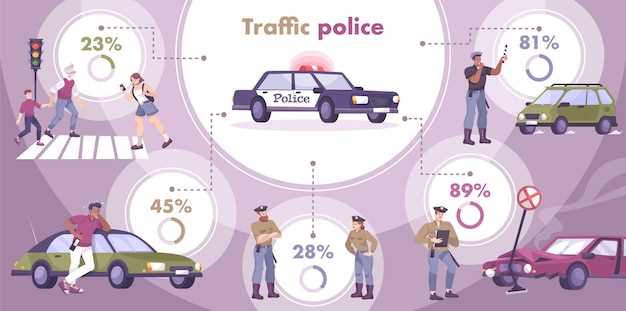
Understanding the various warning lights on a vehicle’s dashboard is crucial for every driver. These lights serve as the primary means of communication between the vehicle and its operator, indicating both the health of the vehicle and the driver’s actions. Each warning light encompasses a specific meaning that can provide valuable insights into potential issues, ranging from minor concerns to significant mechanical failures.
Accurate interpretation of these warning signals can not only enhance vehicle performance but also ensure the safety of the driver, passengers, and other road users. By recognizing what these lights signify, drivers can respond promptly and appropriately, reducing the risk of accidents caused by negligence or ignorance of mechanical issues.
In this article, we will delve into the most common vehicle warning lights, explain their meanings, and discuss the necessary actions that should be taken upon their illumination. Whether you’re a new driver or a seasoned motorist, familiarity with these warning lights can empower you to take charge of your vehicle’s maintenance and safety, ultimately leading to a more enjoyable driving experience.
Understanding the Dashboard Warning Light Symbols
The dashboard of a vehicle is equipped with various warning light symbols that communicate essential information about the vehicle’s status. Understanding these symbols is crucial for ensuring safety and maintaining the vehicle’s performance. Below are some common dashboard warning light symbols and their meanings:
- Check Engine Light: Indicates a potential issue with the engine or its components. Requires immediate attention to avoid further damage.
- Oil Pressure Warning: Signals low oil pressure, which may indicate insufficient oil levels or a failing oil pump. Check oil levels and seek professional assistance.
- Battery Warning Light: Suggests a problem with the vehicle’s electrical system, often related to the battery or alternator. Monitor battery performance and connections.
- Brake Warning Light: This light can indicate several issues such as low brake fluid, worn brake pads, or an engaged parking brake. Ensure brakes are functioning properly.
- Tire Pressure Monitoring System (TPMS): Warns of low tire pressure. Check tire inflation to enhance safety and fuel efficiency.
- ABS Light: Indicates a malfunction in the anti-lock braking system. Have the system checked to ensure optimal braking performance.
- Coolant Temperature Warning: Alerts to overheating engine coolant. Make sure to check coolant levels and monitor the engine temperature.
- Airbag Warning Light: Signals a malfunction in the airbag system. Immediate attention is required to ensure passenger and driver safety.
- Fuel Warning Light: Notifies that fuel levels are critically low. Refuel promptly to avoid running out of fuel.
Interpreting these symbols correctly can prevent accidents and costly repairs. Always refer to the vehicle’s owner manual for specific meanings related to your model, as symbols may vary between manufacturers. Regular maintenance and prompt attention to warning lights can enhance vehicle reliability and longevity.
Categories of Warning Lights: What Do They Mean?
Warning lights on a vehicle’s dashboard provide crucial information about its operational status. Understanding these lights is essential to ensure safety and performance. They can generally be categorized into three main types: Indicator Lights, Warning Lights, and Malfunction Indicator Lights.
Indicator Lights are designed to inform the driver about the functioning of various vehicle systems. For example, the turn signal indicator light blinks when the turn signals are activated, providing a clear indication of the vehicle’s intended direction. Other common indicator lights include the high beam indicator and the seatbelt reminder light. These lights are generally not a cause for concern unless they malfunction.
Warning Lights serve as alerts for potential issues that require immediate attention. A common example is the battery warning light, which indicates a problem with the vehicle’s electrical system, suggesting that the battery may not be charging properly. Another critical warning light is the oil pressure warning light, which signifies that oil pressure is low, potentially leading to engine damage if not addressed promptly. Ignoring these lights can lead to serious vehicle malfunctions.
Malfunction Indicator Lights, often referred to as check engine lights, signal significant problems within the vehicle’s engine or emission system. When this light illuminates, it indicates that the onboard diagnostics system has detected a fault. Possible issues can range from a loose gas cap to more severe engine malfunctions. Immediate diagnostic testing is recommended to identify and rectify the problem.
In summary, understanding the categories of warning lights–indicator lights, warning lights, and malfunction indicator lights–is crucial for maintaining vehicle safety and performance. Regularly monitoring these indicators and responding appropriately can prevent minor issues from escalating into major, costly repairs.
Immediate Actions to Take When a Warning Light Activates

When a warning light illuminates on your vehicle’s dashboard, it’s crucial to respond promptly and appropriately to ensure safety and prevent further damage. Here are the immediate actions you should consider:
-
Identify the Warning Light:
Refer to your vehicle’s owner manual to understand the specific warning symbol that has activated. Common lights include:
- Check Engine Light
- Oil Pressure Light
- Battery Alert
- Brake Warning Light
-
Assess the Situation:
Evaluate your vehicle’s performance:
- Listen for unusual sounds
- Observe any strange odors
- Monitor any changes in handling
-
Safe Stopping:
If the warning light indicates a serious issue, find a safe location to pull over. Consider the following:
- Look for a level, well-lit area
- Avoid stopping on busy roads
- Activate hazard lights for additional visibility
-
Turn Off the Engine:
Once safely parked, turn off the engine to prevent potential damage. This can be particularly important for warning lights signaling issues like overheating.
-
Check for Visible Issues:
With the engine off, inspect under the hood and around the vehicle:
- Look for fluid leaks
- Check oil and coolant levels
- Examine battery connections
-
Consult a Professional:
If the warning light persists or if there are obvious problems, contact a mechanic for diagnostics and repairs. Continuing to drive with a warning light can exacerbate the issue.
Taking these proactive steps when a warning light activates helps maintain vehicle safety and performance, ensuring both your well-being and the integrity of your car.
Common Misconceptions About Warning Lights and Their Functions
One prevalent misconception about vehicle warning lights is that they only indicate severe problems that require immediate attention. In reality, many warning lights serve as preventive alerts, letting drivers know about non-critical issues that could develop into significant problems if ignored.
Another common misunderstanding is the belief that all warning lights have the same level of urgency. Warning lights can be categorized into different types, such as advisory, caution, and critical alerts. Misinterpreting these signals may lead to unnecessary panic or, conversely, to taking no action at all when a serious issue arises.
Some drivers believe that turning off the engine when a warning light appears will resolve the issue. In many cases, this temporarily silences the alert but does not address the underlying cause. Ignoring or dismissing the warning can result in further damage and more costly repairs over time.
Additionally, many individuals think that warning lights will turn off automatically once the issue is resolved. While this may happen for some minor alerts, others require a manual reset or additional diagnostics to clear the light from the dashboard. Failing to adequately address the trigger of the warning light will likely cause it to reappear.
Lastly, there’s a widespread notion that old vehicles are less prone to warning lights due to simpler mechanics. This is misleading; older models may have fewer electronic components, but they still experience issues that can trigger warning lights. Regardless of the vehicle’s age, staying vigilant about dashboard alerts is essential for safe operation.
How to Use the Vehicle Owner’s Manual for Warning Light Guidance
The vehicle owner’s manual is an essential resource for understanding the various warning lights that may illuminate on your dashboard. These lights serve as indicators of your vehicle’s status, alerting you to potential issues or maintenance requirements. Here’s a structured approach to effectively utilize the manual for interpreting these signals.
First, locate the section in the manual dedicated to warning lights. Most manuals will have a contents page that lists various topics, including dashboard indicators. This section will typically include descriptions of each light, their respective symbols, and the appropriate actions to take upon their illumination.
Next, familiarize yourself with the color coding of warning lights. Generally, warning lights can be categorized into three main colors:
| Color | Meaning | Action Required |
|---|---|---|
| Red | Critical Issue | Stop Immediately |
| Yellow/Amber | Warning | Check Soon |
| Green/Blue | Information | Observe |
After understanding the color codes, refer to the specific warning light you are encountering. The manual will provide details such as the potential causes, consequences of ignoring the light, and the recommended steps to resolve the issue. For instance, if the check engine light activates, the manual may advise checking the fuel cap, or it may indicate that a diagnostic test is required.
Additionally, many manuals include troubleshooting tips and outline how to reset certain lights. This is particularly helpful for maintenance reminders or when a light activates after routine servicing.
Finally, it is advisable to keep the owner’s manual readily accessible in your vehicle. Having this information on hand can save you time and possibly prevent further damage by enabling you to respond appropriately to warning lights as soon as they appear.
Preventative Maintenance to Minimize Warning Light Occurrences
Preventative maintenance is essential for vehicle longevity and performance. Regularly scheduled maintenance helps identify potential issues before they escalate into more serious problems that could trigger warning lights. By adhering to a comprehensive maintenance schedule, drivers can reduce the chance of unexpected maintenance alerts.
One of the primary aspects of preventative maintenance is routine inspections. Checking fluid levels, including oil, coolant, brake fluid, and transmission fluid, ensures that the vehicle operates smoothly. Low levels can lead to overheating or engine damage, which may illuminate warning lights.
Another crucial component is tire maintenance. Regularly rotating tires, ensuring proper inflation, and checking for wear can prevent warning lights associated with tire pressure monitoring systems (TPMS) and enhance overall safety. Drivers should also pay attention to brake systems, as worn-out brake pads or low brake fluid can trigger alerts.
Regularly replacing air filters and fuel filters contributes to engine efficiency. Clogged filters can lead to poor performance and eventual warning lights. Spark plugs and ignition systems should also be inspected and replaced as needed to maintain optimal engine performance.
Updating software and conducting diagnostic checks can preemptively identify electrical issues that might cause warning lights. Many modern vehicles rely on computers to monitor system performance; thus, software updates ensure that these systems operate effectively.
Additionally, maintaining the battery’s health is vital. Regular checks for corrosion and testing the battery’s charge can prevent issues related to electrical failures, which are common causes of dashboard warnings.
In summary, a commitment to preventative maintenance not only extends the vehicle’s life but also minimizes instances of warning lights. By adhering to a proactive approach, drivers can enjoy a safer and more reliable driving experience.













